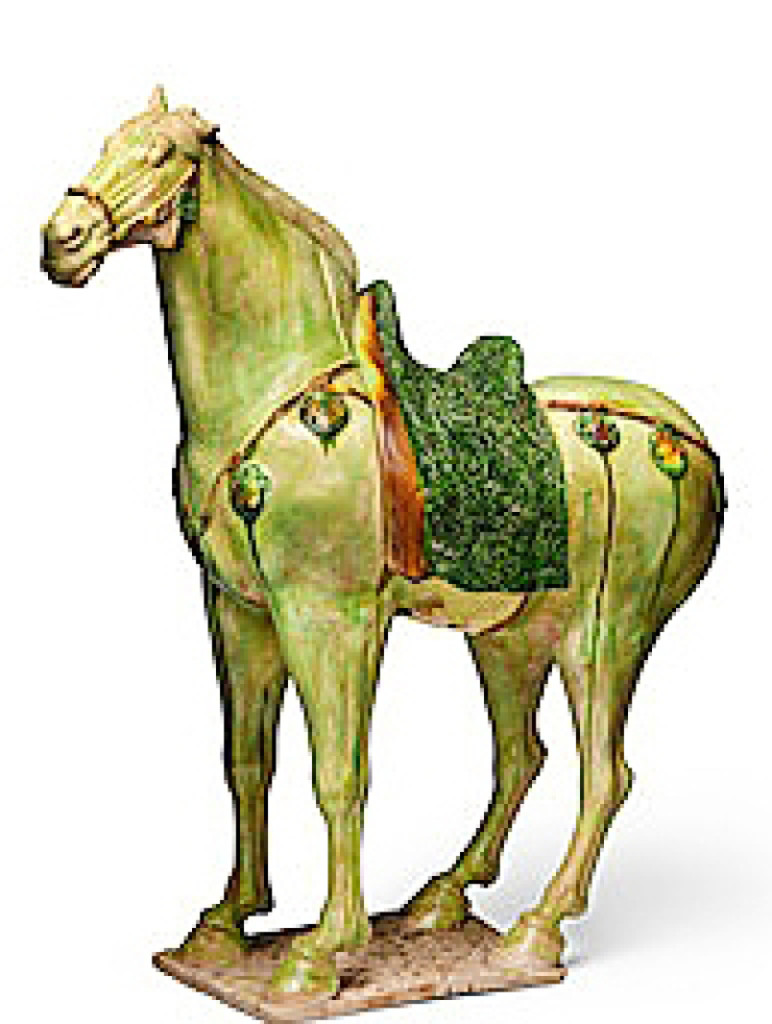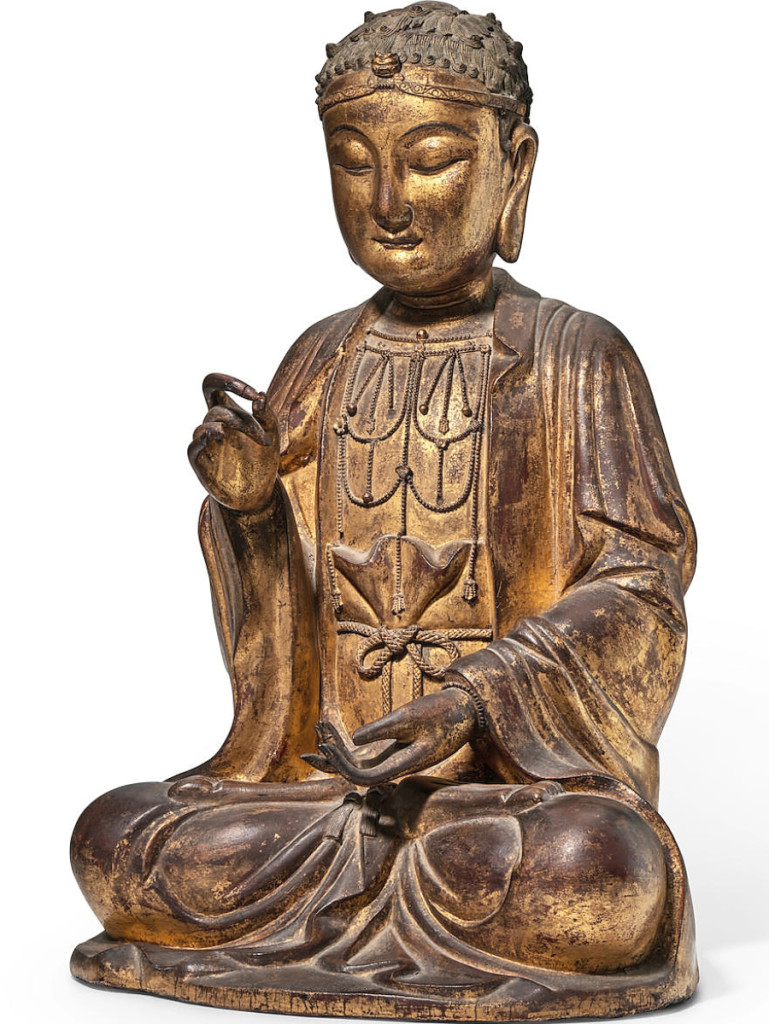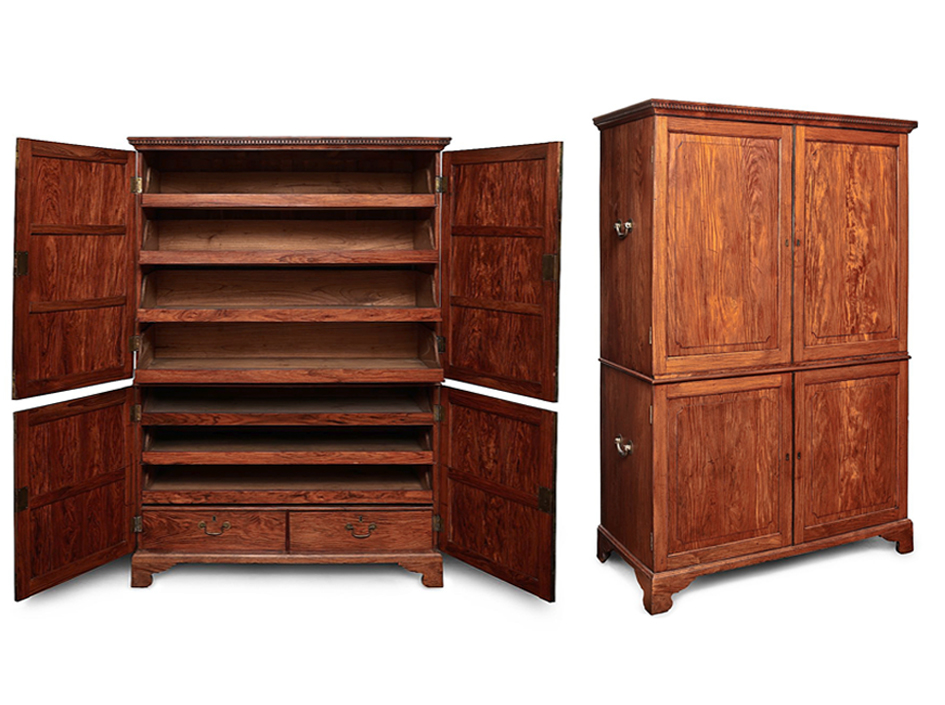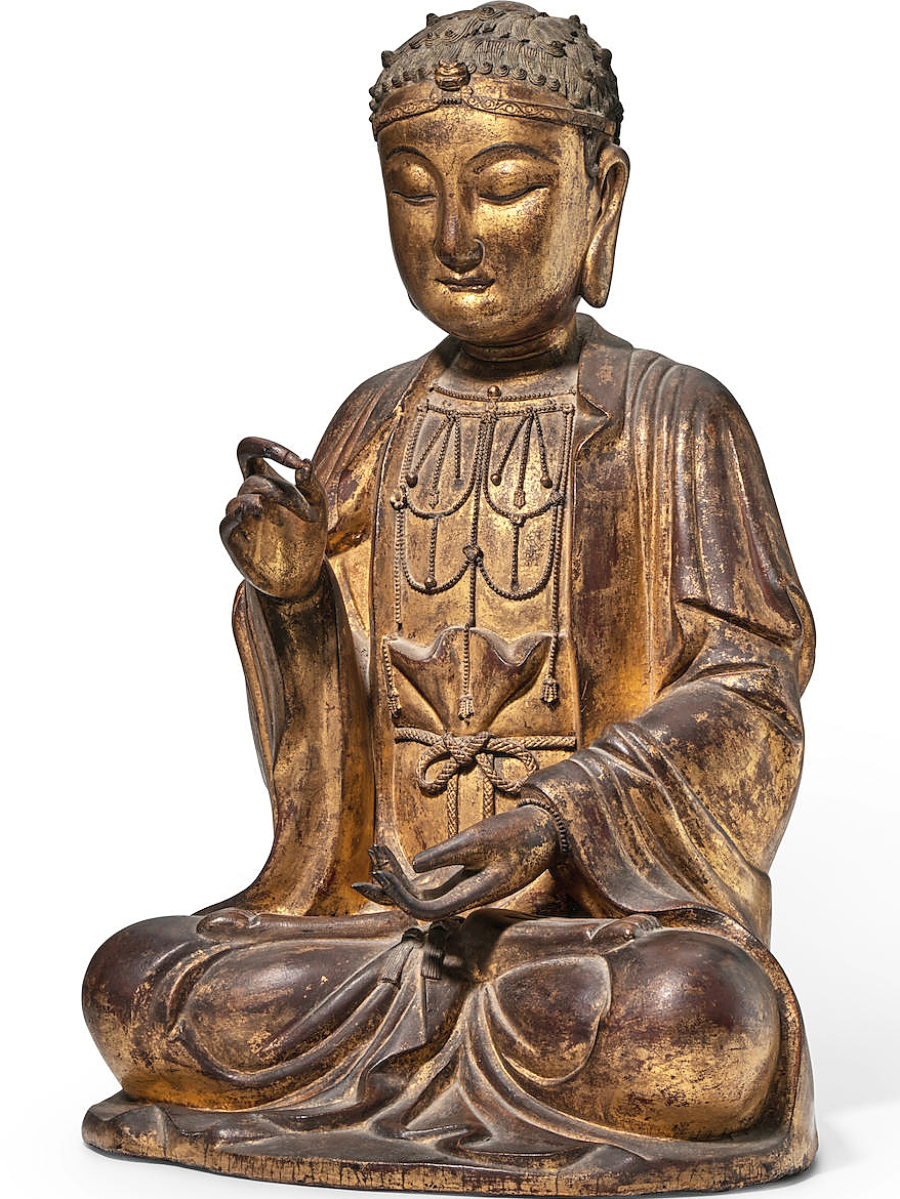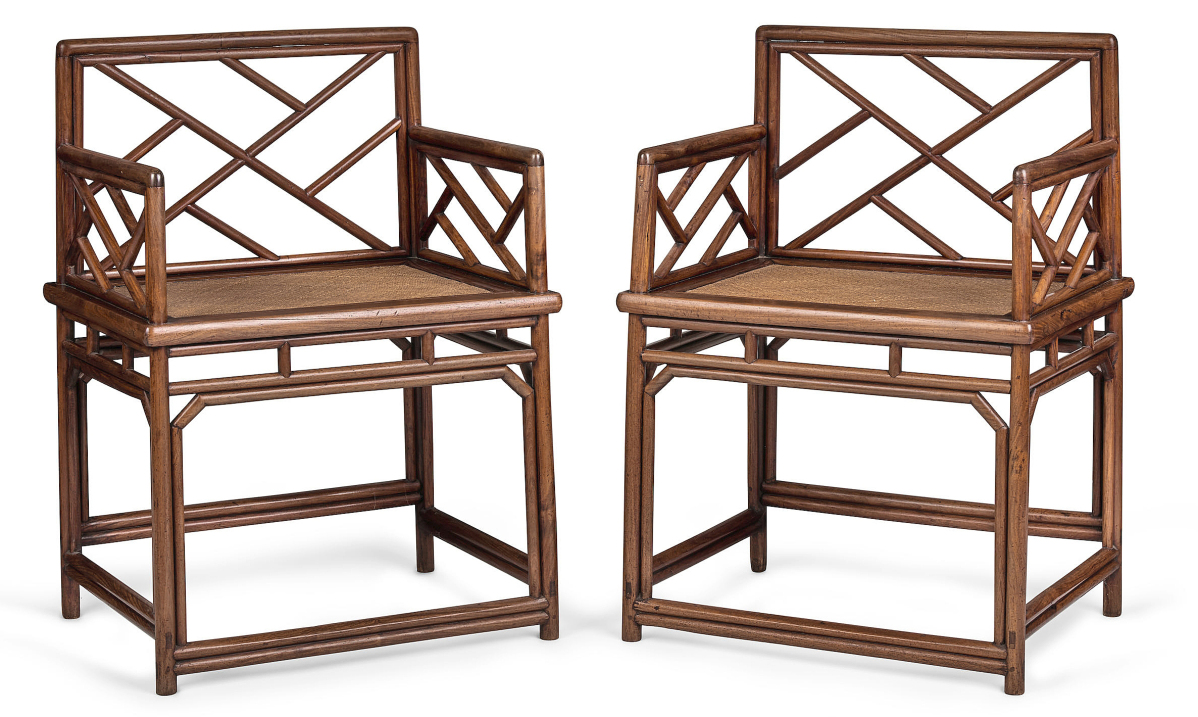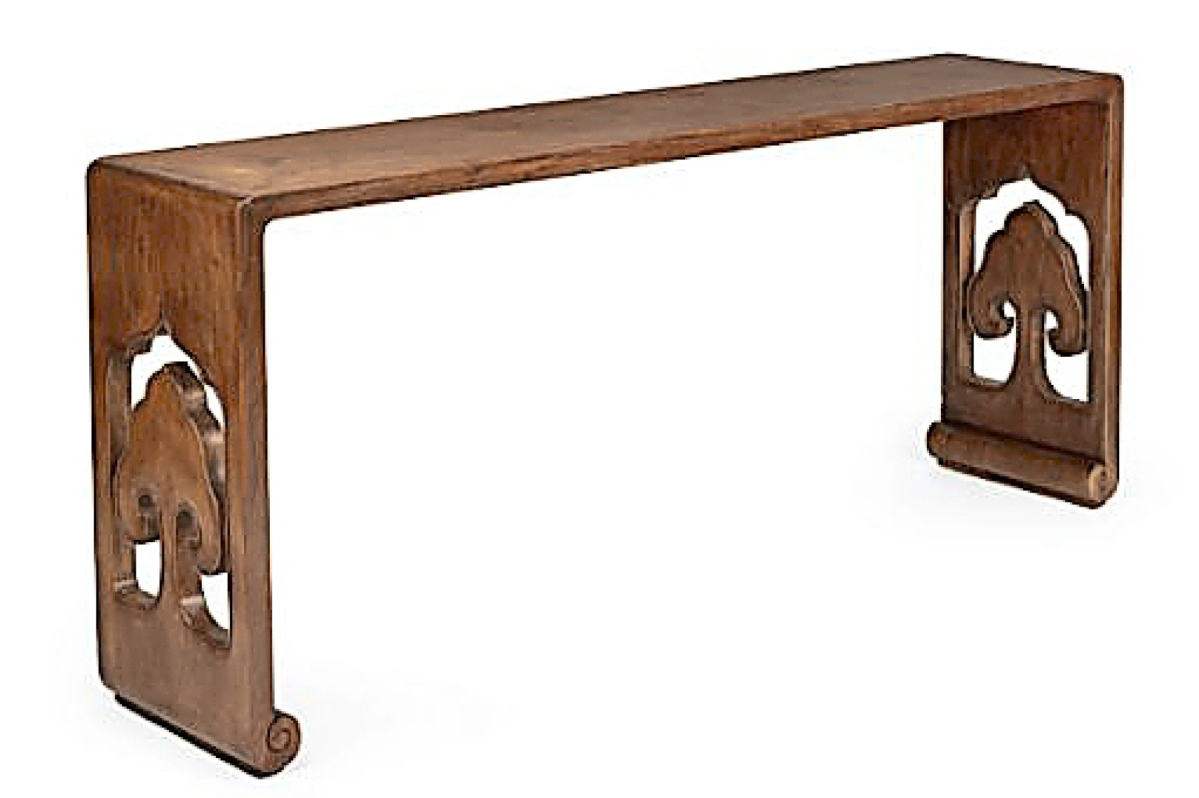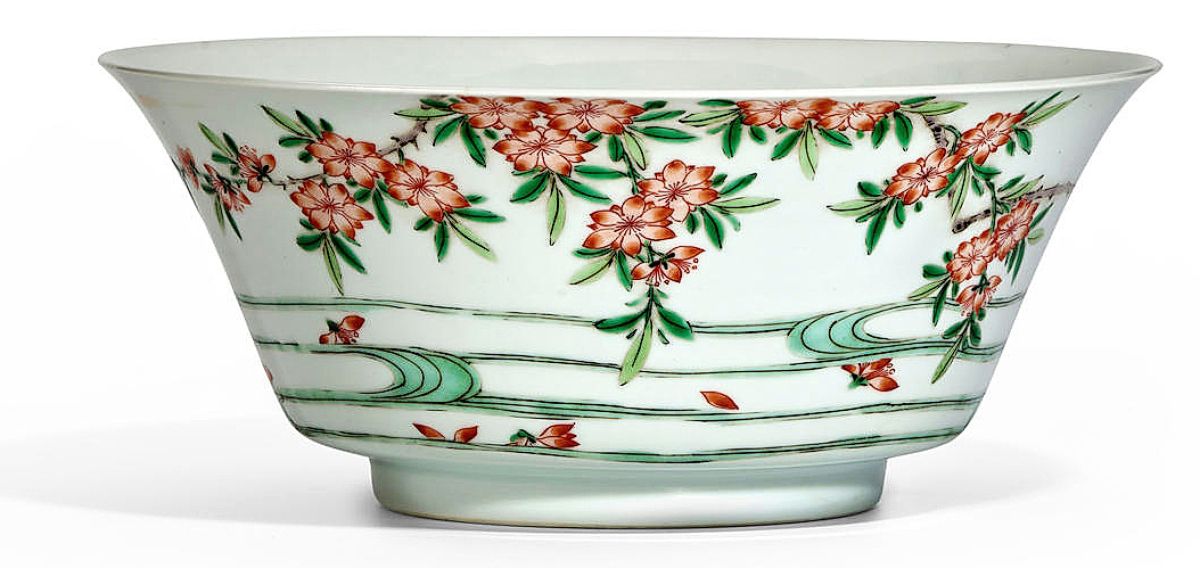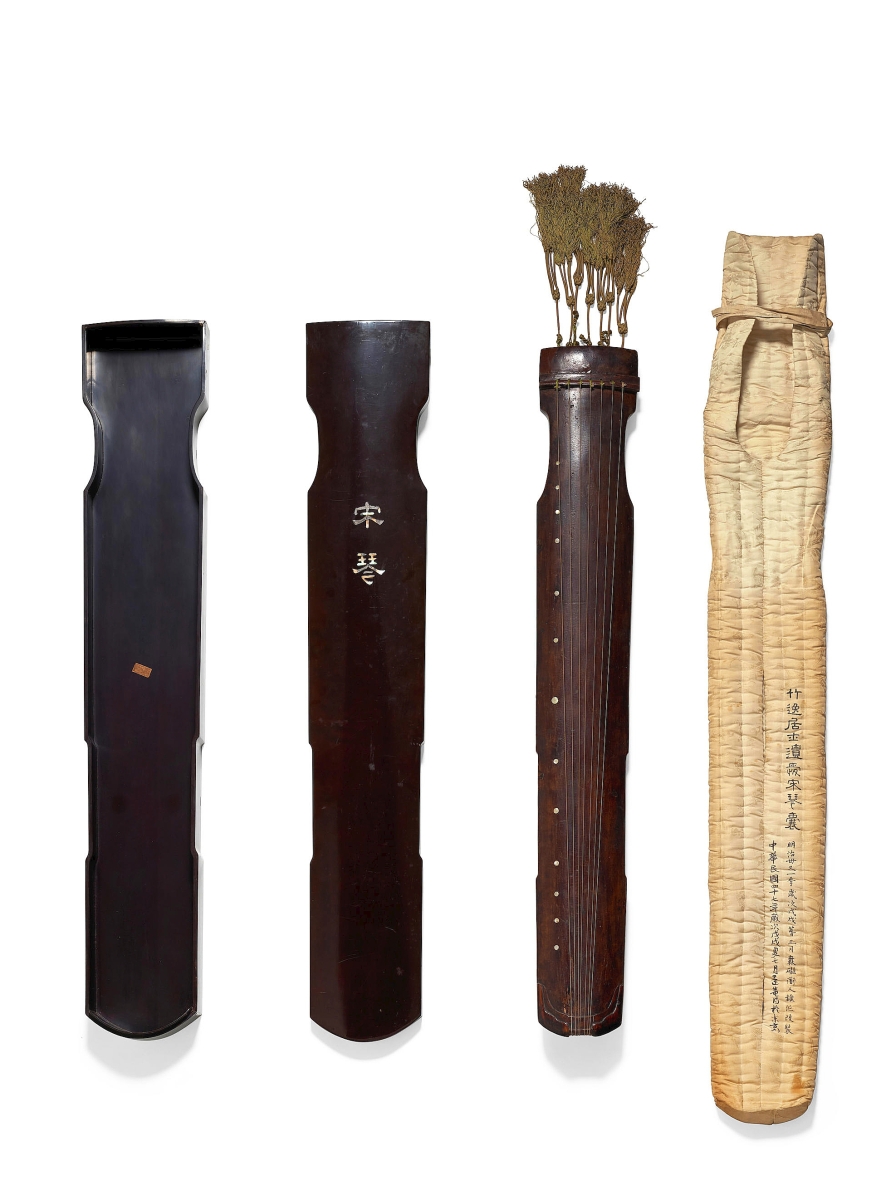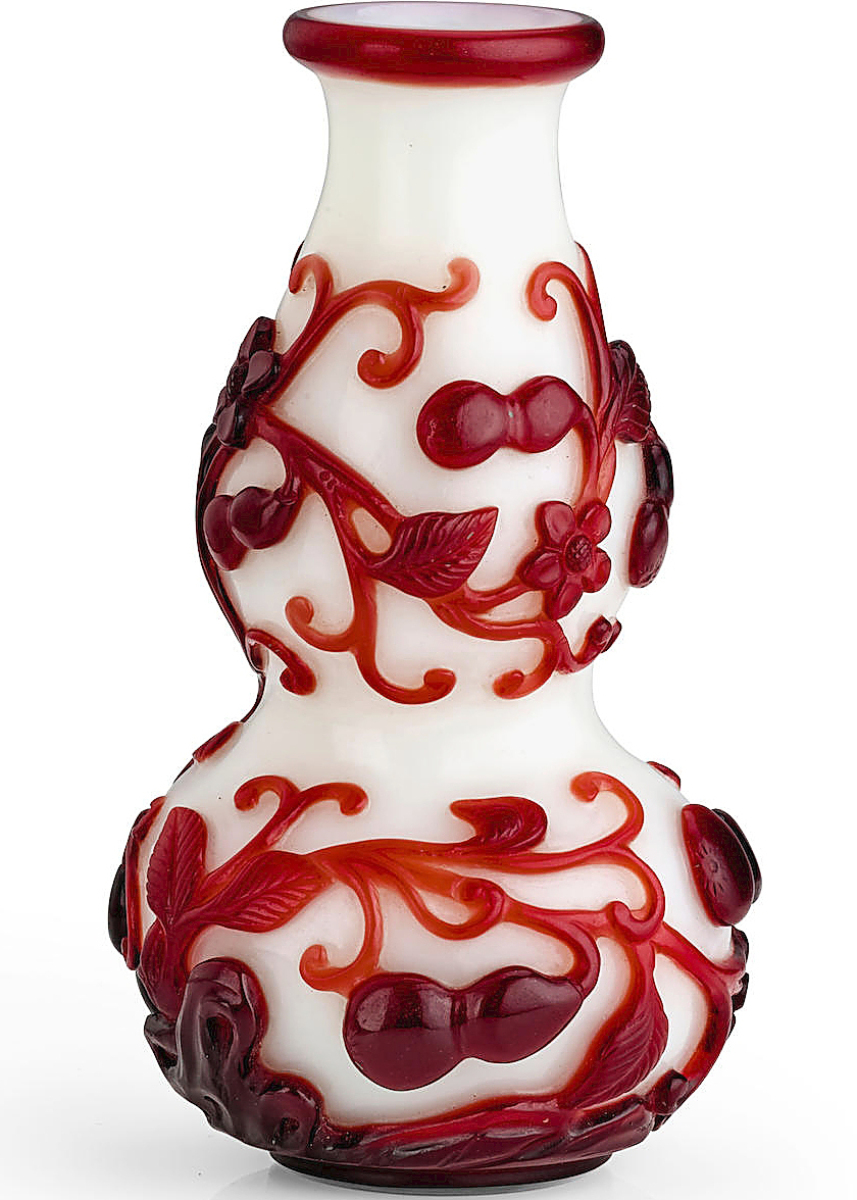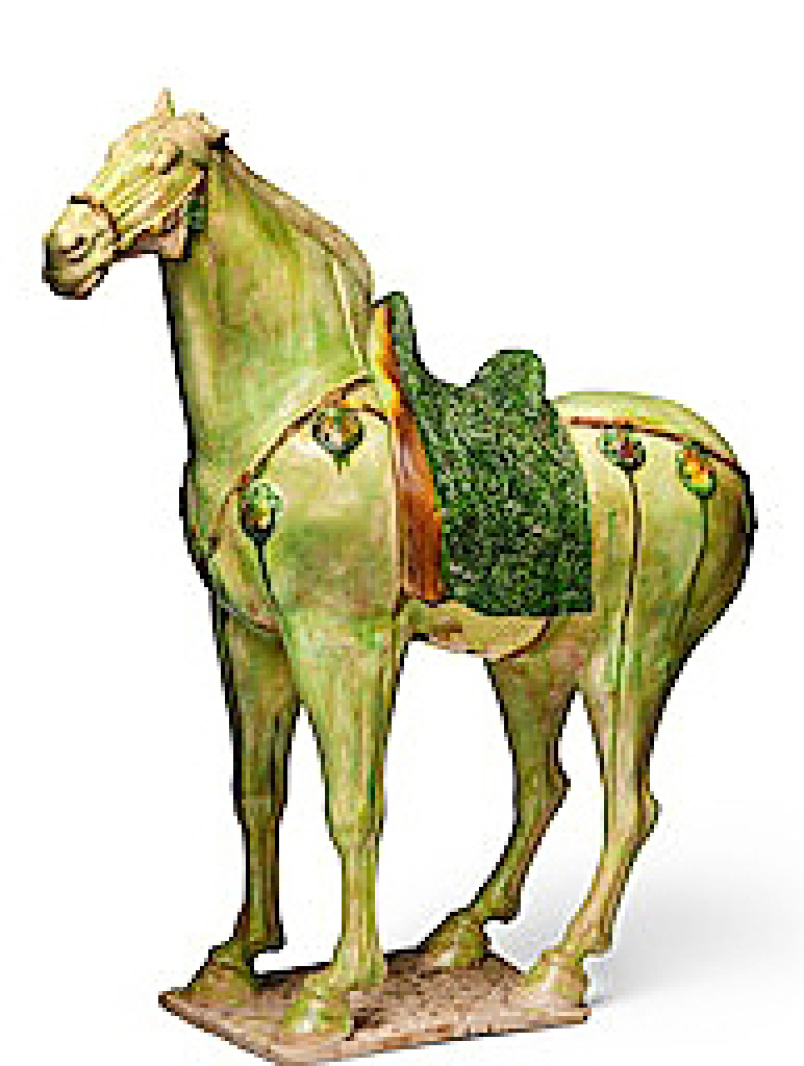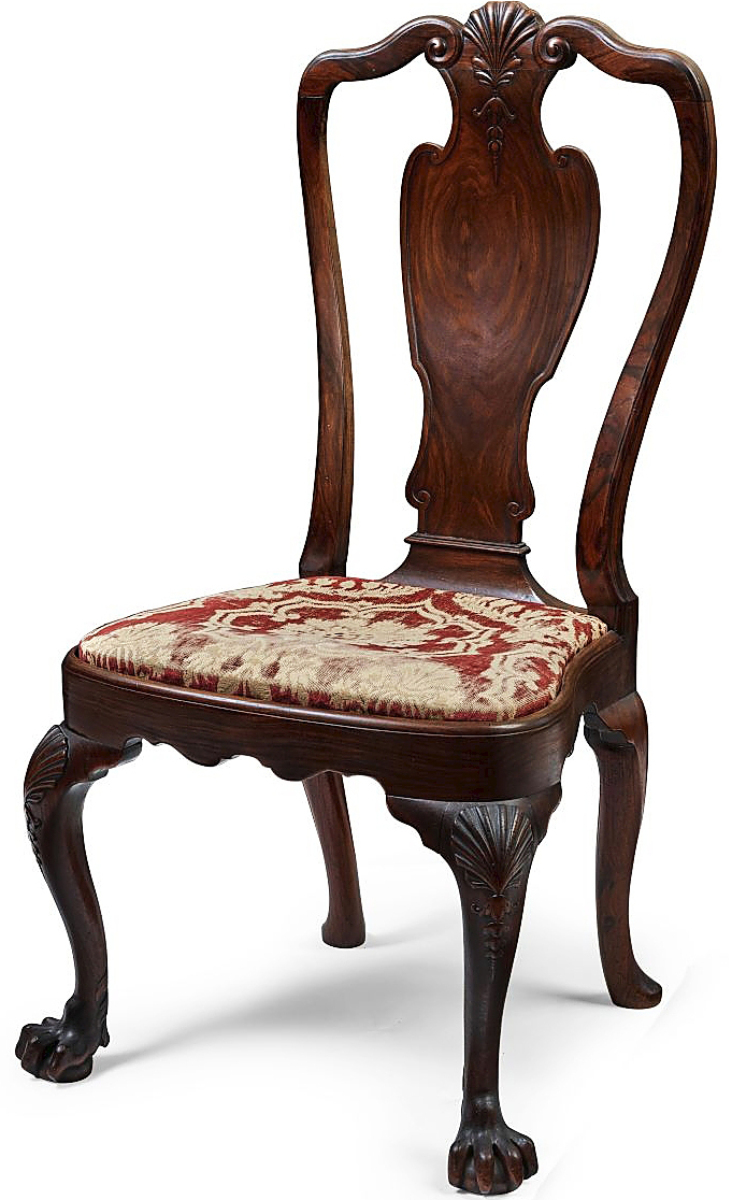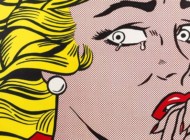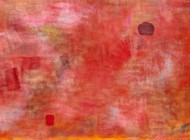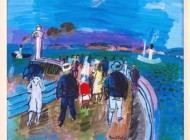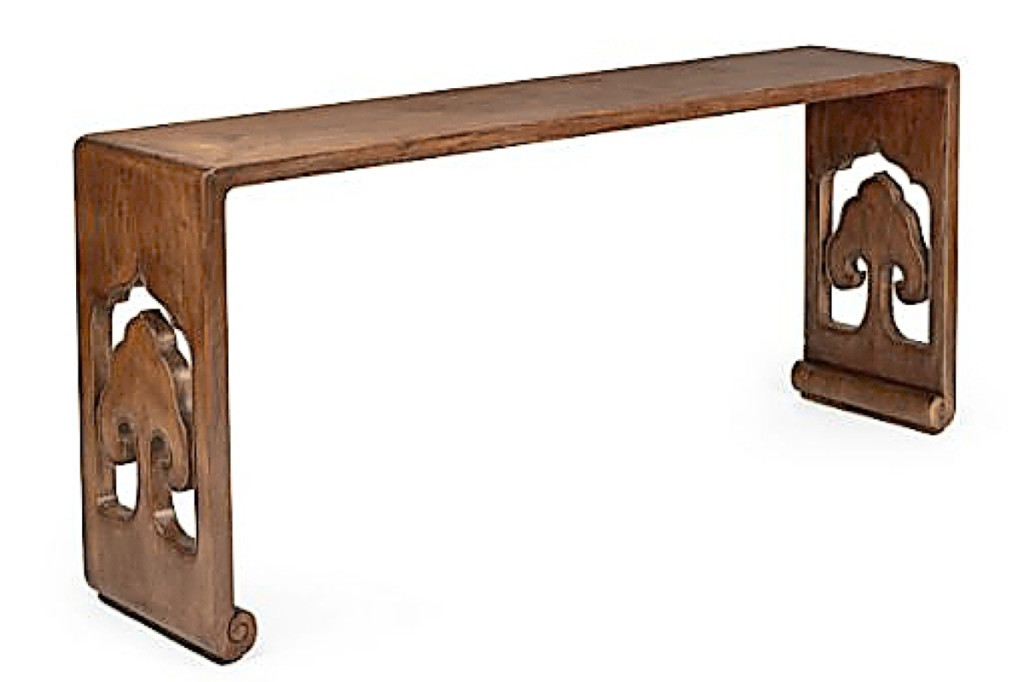
This Eighteenth Century huanghuali qin table, Tiaoji, outperformed its $30/50,000 estimate to bring $212,500, the top lot in the sale. Such tables were used for holding musical instruments, reading handscrolls and other leisurely pursuits.
Review by W.A. Demers, Photos Courtesy Bonhams
NEW YORK CITY – The full panoply of Chinese works of art, including the Richard Milhender export furniture collection, crossed the block at Bonhams on March 21, totaling more than $6 million with an 84.5 percent sell-through by lot. Nearly 500 registered bidders were logged on to Bonhams’ own platform, LiveAuctioneers and Invaluable.
An Eighteenth Century huanghuali qin table, Tiaoji, led the sale, outperforming its $30/50,000 estimate to bring $212,500, going to a Chinese buyer. The table featured a massive, well-figured single-board top, half-lapped, mortise and tenoned to thick side panels carved with a single yuji cut-out centered above a scroll-work base. It measured 31½ inches high by 80¼ inches long by 15¼ inches wide. Tables of this type, composed of a long single board mortise and tenoned to the sideboards, were used for holding musical instruments, reading handscrolls and other leisurely pursuits. The yuji cutouts on each side panel are symbols of good fortune.
Good fortune was definitely smiling on the family that consigned a lot to benefit Guide Dogs for the Blind, San Rafael, the Panda Fund. A pair of lemon yellow glazed bowls with Yongzheng six-character marks and of the period was estimated just $5/7,000, but realized a robust $200,313. Each bowl had deeply rounded sides rising from the straight foot to an everted rim, the exterior covered with an attractive lemon-yellow glaze, the interior and bottom glazed white. The bowls had been property from the collection of Dr Wallace and Alice Smith, San Francisco, in the collection prior to 1971, by descent. “They went remarkably well,” said Michael Hughes, head of sale at Bonhams. “I think the color of the yellow just really appealed to people as a highly imperial yellow.”
A large pale-green and sancai-glazed caparisoned horse, Tang dynasty, brought $181,563. The thoroughbred horse of stately proportions stood four-square on a rectangular base, the head naturalistically modeled with flared nostrils and large eyes, the mouth gently closed, one ear unusually and naturalistically flipped back as if responding to an insect, the mane docked and neatly hogged along the spine. Overall covered in a pale green glaze, a dark-green fur blanket thrown across the leather saddle, adding accents of color to the pale green backdrop, the horse was caparisoned with a leather bridle and straps over chest and crupper, decorated with suspended leaf-shaped medallions glazed in sancai colors of green, ochre and straw.
Fetching $162,813, more than twice the high estimate, was a rare pair of Seventeenth/Eighteenth Century huanghuali “Rose” chairs with “cracked-ice” decoration from a West Coast private collection. Unusually modeled after bamboo chair prototypes, each with a short rectangular back and sides inset with slanted spindle posts forming “cracked-ice” design, the chairs featured framed seats fitted with soft mats and secured by stretchers underneath, all supported by simple column legs further framed with bamboo-form stretchers and supports, the wood of rich caramel color and attractive patina.
Among figural highlights, a rare Seventeenth Century gilt dry lacquer figure of Avalokitesvara tripled high expectations, settling at $150,313. The 23½-inch-high figure was seated in dyhanasana, the left and right hand posed to possibly hold a lotus stem or a kalasa, his wide-sleeved robes worn over both shoulders and falling in gentle folds around his legs and to the front, and tied on a neat bow at his mid-belly below were simple jewels framing his exposed chest. His serene expression was framed by wide-lobed pendant ears and set off by a xiangcai patterned diadem centered on a fragment of a seated Buddha framing his black lacquered hair dressed in unusual and elegantly plaited and tiered locks. Overall, the figure was covered with gilt lacquer worn in places and with good patina.
Also tripling its high estimate at $119,063 was a rare doucai-enameled “Flowering Branches” bowl, Chenghua six-character mark, Kangxi. Purchased in the late 1980s, it featured deep, flaring sides supported by an angled base and short foot ring and was decorated on the exterior with blossoming prunus branches and a sunset glowing at the distance, all above a quiet stream carrying away the fallen petals. The bowl’s interior plain was plain and at its base an apocryphal six-character Chenghua mark within double circle in underglaze-blue.
The Museum of Fine Arts, Boston, was the successful bidder at $75,313 for a choice lot from the Richard Milhender collection, Boston, It was an early Chinese huanghuali “vase splat” chair, circa 1730. Modeled in the George II style with shaped stiles and central vase-shaped splat with a shell cresting above with pendant acanthus, the wood bore a rich tone and attractive darker markings. Its upholstered seat was set above cabriole legs with carved shell motifs to the knees above further pendant acanthus and deeply carved claw and ball feet with four talons.
From the same collection, a rare and large Chinese well-figured huanghuali two-section four-door linen press, circa 1760, crossed the block at $69,063.
Rounding out the sale’s top highlights were a large lacquer qin (a musical instrument resembling a slender zither) Ming dynasty or earlier, going out at $106,563, more than five times its estimate, and an imperial red overlay glass double-gourd bottle vase with Qianlong four-character mark in a square and of the period, Beijing Palace Workshops, more than quadrupling its high estimate and leaving the gallery at $100,313.
Prices given include the buyer’s premium as stated by the auction house. For information, www.bonhams.com or 212-644-9001.

